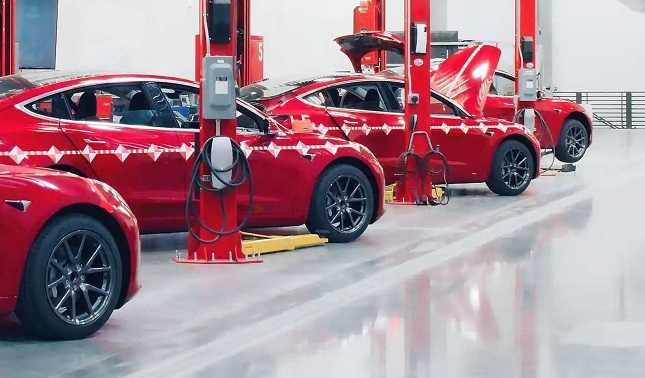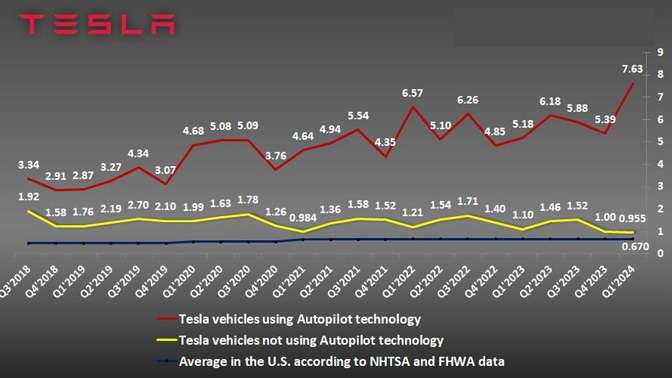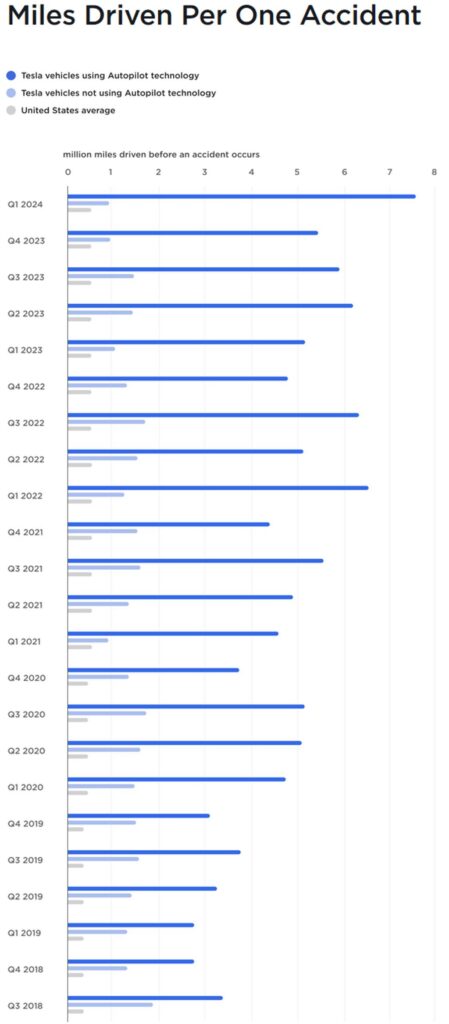Tesla’s Q1 2024 Vehicle Safety Report Shows Record Autopilot Performance
Tesla recently released its updated quarterly Vehicle Safety Report, revealing key data for the first quarter of 2024. The latest figures show a significant improvement in the number of miles driven per accident when using Tesla’s Autopilot technology, setting a new record. Conversely, the safety metrics for driving without Autopilot have worsened. The U.S. national average, based on 2022 data from the NHTSA and FHWA, remains unchanged.

Autopilot Sets New Safety Record
According to Tesla, vehicles using Autopilot in Q1 2024 recorded an average of 7.63 million miles driven per accident. This marks a 47% year-over-year improvement and establishes a new record, with the previous highest being 6.57 million miles per accident in Q1 2022. Throughout 2023, this figure ranged between 5.18 and 6.18 million miles. Remarkably, the Autopilot safety metric is approximately 11 times higher than the U.S. average for all vehicles.
Manual Driving Safety Declines
In stark contrast, Tesla vehicles not using Autopilot averaged 0.955 million miles per accident in Q1 2024. This represents a 13% decline compared to Q1 2023, marking the worst performance on record. The reasons for this decline are unclear, as multiple variables, such as more challenging driving conditions, could play a role. Notably, more miles are driven with Autopilot, potentially leaving more complex driving scenarios for manual drivers.
Comparing Autopilot and Manual Driving
The data reveals a growing disparity between driving with and without Autopilot, which widened by nearly 70% year-over-year. However, Tesla cautions against directly comparing these two data sets due to differences in driving conditions, such as highway versus city driving. Thus, the data should only be used to assess improvements within each category over time, rather than comparing Autopilot to non-Autopilot driving.

Understanding the Limitations
Tesla acknowledges several limitations in their data collection methodology. For instance, they include all accidents regardless of fault, noting that over 35% of Autopilot crashes occur when the Tesla vehicle is rear-ended by another car. Additionally, the report’s results may be influenced by factors like seasonality, varying driving conditions, and the relatively infrequent updates to the U.S. national average, which includes a much older vehicle fleet with fewer safety systems.
Methodology Overview
Tesla’s methodology involves collecting data from its fleet without identifying specific vehicles to protect privacy. The company receives crash alerts whenever a crash is reported, including information on whether Autopilot was active at the time. To ensure conservative statistics, Tesla counts any crash where Autopilot was deactivated within five seconds before impact and includes all crashes with airbag deployment or other active restraints.

Conclusion
Tesla’s Q1 2024 Vehicle Safety Report highlights the substantial safety benefits of using Autopilot, with record-setting miles driven per accident. However, it also underscores the challenges and complexities of driving without Autopilot. While the data offers valuable insights into the evolving safety landscape of Tesla vehicles, it also emphasizes the need for careful interpretation, considering the varied driving scenarios and conditions.
By providing these detailed safety metrics, Tesla continues to demonstrate its commitment to transparency and vehicle safety, showcasing the potential advantages of its Autopilot technology. As the automotive industry advances, such data will be crucial in understanding and enhancing the safety of both autonomous and manual driving.
Related News
